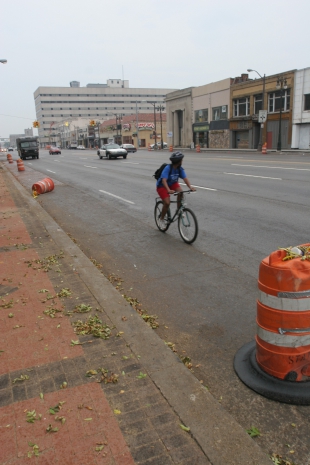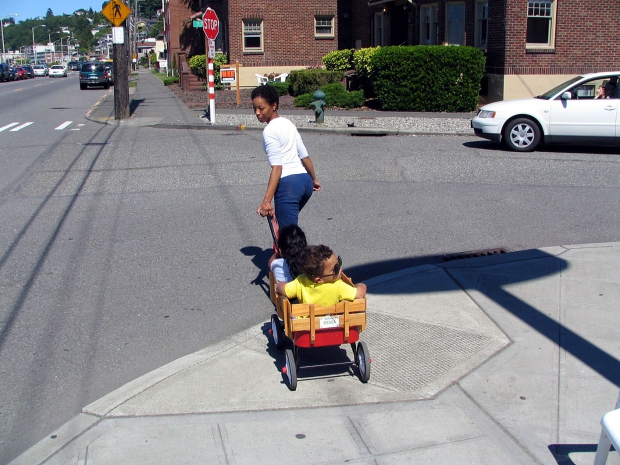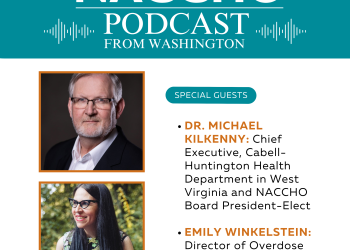By Karin Valentine Goins, MPH, Program Director, Division of Preventive and Behavioral Medicine, University of Massachusetts Medical School
Editor’s Note: This is the first in a three-part series covering the Capabilities for Public Health Agency Involvement in Land Use and Transportation Decision Making to Increase Active Transportation Opportunity from the UMass Worcester Prevention Research Center.
Americans don’t get enough physical activity, including adults, and children. Active transportation, i.e., walking and biking, can help people meet recommended physical activity benchmarks. However, decisions that involve land use and the built environment are often made without taking health into consideration.
Local health departments (LHDs) are not routinely involved in built environment or land use planning decision-making processes, but they have an important voice to contribute. For example, LHDs can help ensure roads and sidewalks are built in a way that maximizes health benefits for community members.
Recommendations abound for public health agencies to participate in built environment decision making, from the National Physical Activity Plan to the US Surgeon General’s Call to Action to Promote Walking and Walkable Communities. Yet results from NACCHO’s National Profile of Local Health Departments and other data show few health departments are involved.
As part of the CDC-funded Physical Activity Policy Research Network Plus (PAPRN+), the UMass Worcester Prevention Research Center developed a set of capabilities to help LHDs get more involved in local built environment decision-making. The UMass research team engaged more than 50 practitioners from related professions (public health, land use planning, transportation/public works, municipal administration, and advocacy) in the process.
The team asked these subject matter experts the following question: Given the varying levels of resources LHDs have available to them, what are the minimum, intermediate, and high levels of involvement that could be expected to have an influence on the built environment? The research team then grouped the answers into 10 department capabilities, with two to eight tasks under each, and then they grouped the capabilities into three tiers based on LHD resource level. The resource levels include health departments with the fewest resources, moderate resources, and the most resources.
After confirming with the experts that the capabilities were valid, the team compiled them into a guide called Capabilities for Public Health Agency Involvement in Land Use and Transportation Decision Making to Increase Active Transportation Opportunity. This guide can help local health department officials take the following actions:
- Assess the current level of public health involvement with local built environment decisions, considering how this involvement falls within the capabilities and tasks outlined in the guide.
- Identify additional capabilities that can help LHDs realistically meet their physical activity/active transportation goals, such as those outlined in a local community health improvement plan.
- Select capabilities to pursue based on goals and available resources to meet these goals.
These are the three capabilities most appropriate for health departments with the fewest resources:
Capability: Collaborate with other public officials
Definition: Establish and maintain relationships with local, regional, and state government partners and across department programs.
Tasks:
- Identify city planning and transportation staff and their missions: Become familiar with names, titles, and responsibilities of the individuals responsible for land use, transportation, and public works in the community.
- Establish personal relationships with staff in transportation and land use agencies: Build relationships through the same process used with community and health care organizations.
- Formalize inter-agency relationships: It will be important in some communities to make relationships official, with a memorandum of understanding or another statement of working relationship.
- Engage stakeholders within health department divisions to collaborate on built environment initiatives: Departments may find it important to coordinate internally before they reach out to their peers in other departments.
Capability: Represent health and physical activity interests on land use or transportation policy boards
Definition: Serve as voting or non-voting member of boards or committees with responsibilities relate to transportation or land use.
Tasks:
- Serve as a member of permanent or temporary/informal transportation boards or committees such as Metropolitan Planning Organization Advisory, pedestrian/bicycle, Complete Streets, or transportation alternatives program: Boards may have regulatory or advisory responsibility.
- Serve as a member of permanent or temporary/informal land use committees such as planning board/commission, zoning board, comprehensive plan update, interdepartmental review team, or design review team: The information above applies to these boards, with the additional point that land use is locally applied within state context.
Capability: Review and comment on plans, policies and projects
Definition: Review proposed plans, policies, public or private development, or transportation-related projects to enhance or mitigate health impact in terms of walking, bicycling, or transit access.
Tasks:
- Review and comment on transportation project design: Anyone can provide feedback, not just engineers.
- Review and comment on transportation project selection: Transportation projects are often prioritized by planners and engineers based on technical concerns, usual practices, and motor vehicle needs. LHDs have different information about where people in the community need and want to travel.
- Review and comment on capital budget regarding opportunities for pedestrian and bicycle facilities: Health department input can help balance resource allocation for infrastructure and staffing.
- Review proposed local land use or transportation regulation: Local decisions that affect how people travel must reflect state and federal policy, but there is latitude within those rules to respect local priorities.
- Review all proposed, new or updated policies for health and physical activity implications: Even informal review can help maximize positive impact and minimize negative impact.
Stay tuned for the next post in this series, focusing on the four capabilities for departments with moderate resources.
Do you have a story you want to share about success (or struggles) with a capability or tasks? Contact Karin Valentine Goins at [email protected].





